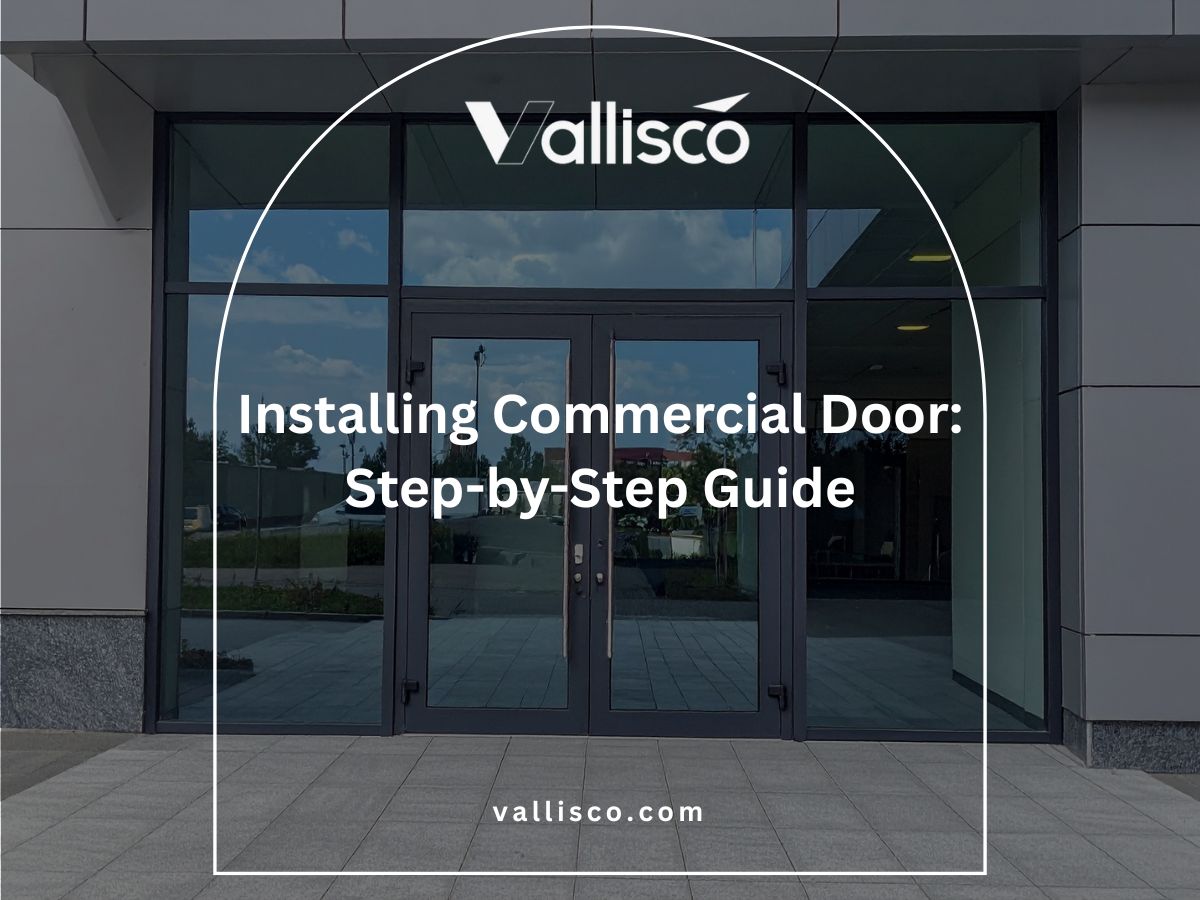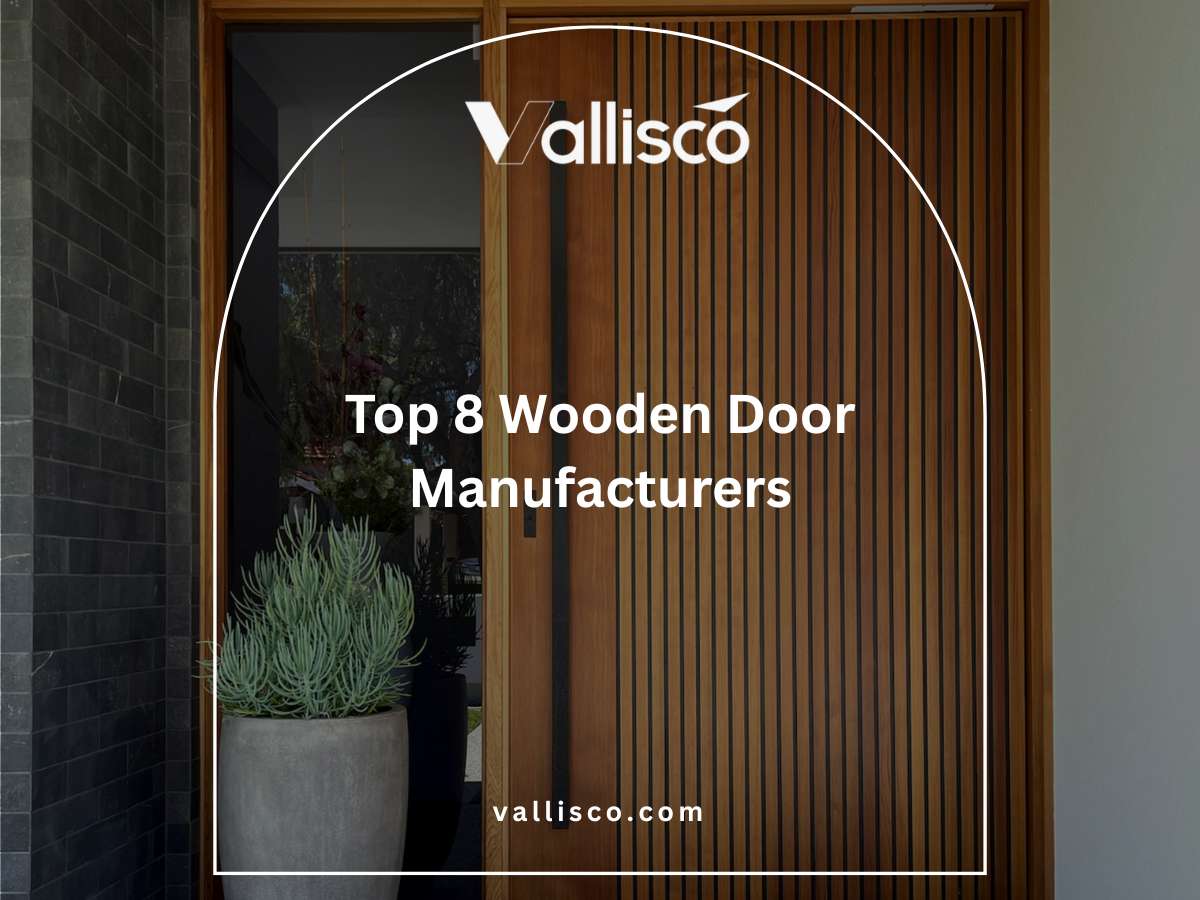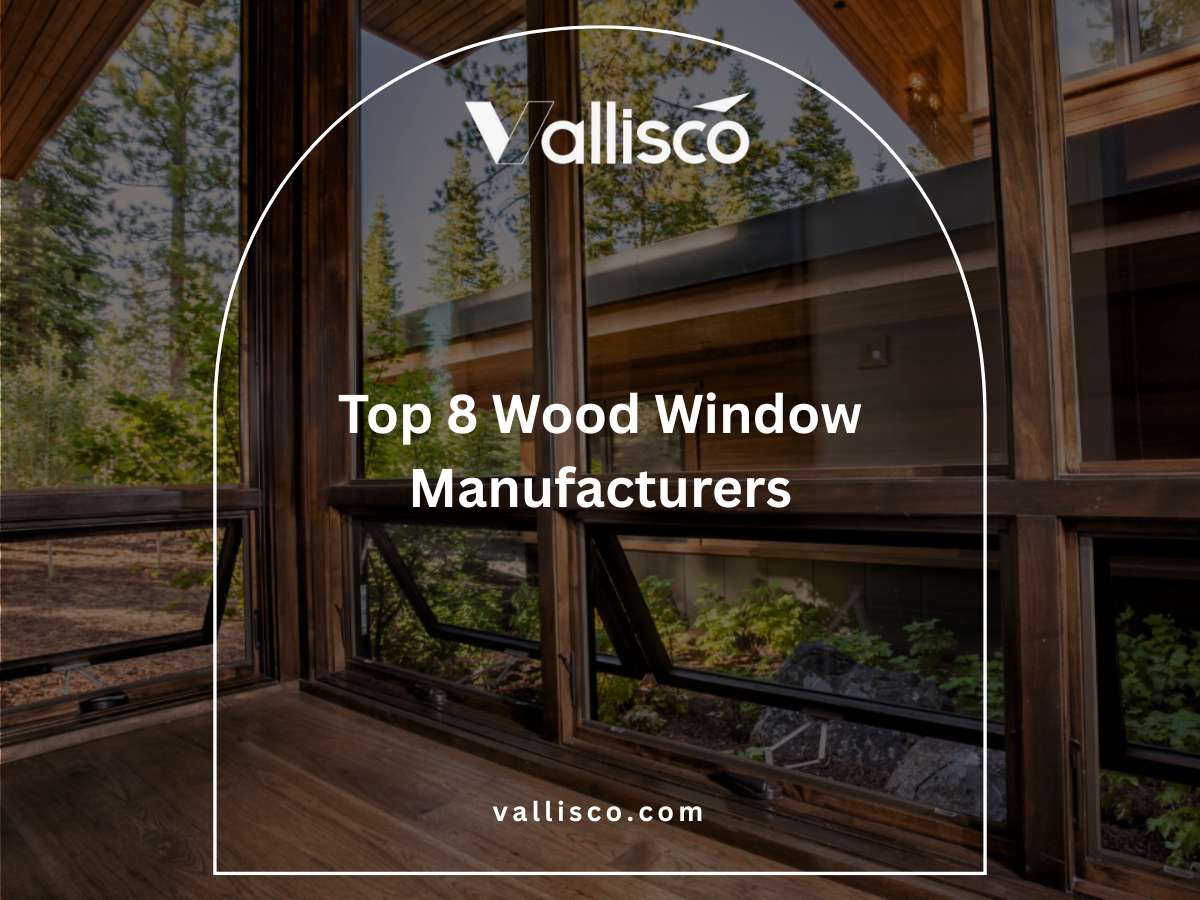When a new building owner took over a mid-rise property, everything looked fine, until the complaints rolled in.
Doors stuck, noise leaked between units, and security was a concern.
The problem? The previous owner had installed flimsy, interior-grade doors.
They didn’t realize it until tenants started leaving.
We help commercial property owners replace low-quality doors with custom steel solutions that actually hold up. We’ve worked with dozens of buildings to fix issues inherited from poor material choices.
This article will walk you through the most valuable benefits of switching to steel apartment doors—from fire ratings to insulation to lasting ROI.
If you’re looking for something that performs under pressure, this will show you what to expect.
Because the right door doesn’t just open, it protects what’s behind it.
So, let’s begin!
Quick Comparison Chart
If you’re considering upgrading your apartment building’s doors, this table gives you a clear, side-by-side view of what steel doors bring to the table. From fire safety to long-term ROI, each row highlights where these doors shine and how they solve real problems for property owners and managers.
| Benefit Category | Key Outcome | Ideal Use Cases | Design Features | Long-Term Value |
| Superior Security | Stops break-ins, tamper-proof | Shared, back, or ground-floor doors | Steel frame, multi-point locks, drill-proof | Improves safety, reduces liability |
| Exceptional Durability | Holds up to heavy use | Utility rooms, high-traffic areas | Thick skins, welded corners, strong hinges | Fewer repairs, long-term savings |
| Fire Resistance | Meets safety codes | Hallways, stairwells, exits | Fire-rated core, smoke seals | Better safety, lower insurance |
| Noise Reduction | Blocks unwanted noise | Near elevators, end units | Solid core, tight seal, acoustic options | Higher tenant comfort, fewer complaints |
| Low Maintenance | Needs fewer repairs | Older or high-turnover buildings | Warp-proof, easy to clean | Lower maintenance costs |
| Energy Efficiency | Cuts heating and cooling loss | Any climate, especially extreme zones | Insulated core, tight seals | Reduces energy bills |
| Enhanced Aesthetics | Looks clean and modern | All building styles | Color options, hardware upgrades | Boosts curb appeal |
| Increased Property Value | Adds to appraisal and resale | Renovations, older properties | Code-ready, solid construction | Attracts buyers, better valuation |
| Pest & Weather Resistance | Keeps out bugs and drafts | Humid, rainy, or windy areas | Tight seal, weatherproof coatings | Fewer tenant complaints |
| Eco-Friendly & Recyclable | Sustainable and recyclable | LEED or green-focused projects | Recycled steel, low-VOC paint | Supports green building goals |
1. Superior Security
I’ve had property managers tell me they used to cross their fingers every time they left the building unattended. That’s how little faith they had in the old doors installed by previous owners. If that sounds familiar, steel doors can finally give you a security setup you can rely on without guessing.
Stronger Locks, Stronger Frame
- Reinforced Lock Housing: Steel doors come with lock pockets that don’t split or weaken over time. That means your deadbolts actually stay secure, even under pressure.
- Heavy-Duty Hinges: Unlike standard doors, steel doors are supported by tamper-resistant hinges. These keep the door tightly in place even if someone tries to pry it from the side.
- Steel Frame Integration: Steel doors pair with steel frames for an extra layer of protection. This eliminates weak spots commonly found in wooden or hollow-core frames.
- Multi-Point Locking Options: You can upgrade to multi-point locks for higher-risk units or main entrances. These systems secure the door at multiple points, not just one latch.
Resists Forced Entry and Tampering
- Solid Core Construction: The solid steel core isn’t easy to kick in or bash through. It discourages opportunistic break-ins and holds up even under brute force.
- Pry-Resistant Edges: Edges on steel doors are tight-fitting and reinforced. This makes it nearly impossible to wedge tools into the gap to force entry.
- Drill-Resistant Locks: Steel doors support high-security locks with anti-drill cylinders. That means burglars can’t just spin a drill through your locking mechanism in under a minute.
Ideal for High-Risk Entry Points
- Back Alley Entrances: We often recommend steel for rear or side apartment doors that see less foot traffic. These doors tend to be more vulnerable and need extra security.
- Shared Building Entrances: In buildings where multiple tenants share one front entry, steel doors prevent unauthorized access better than wood or fiberglass ever could.
- Ground-Floor Units: Units closest to street level benefit the most from steel doors. They’re harder to breach and give tenants added confidence in their safety.
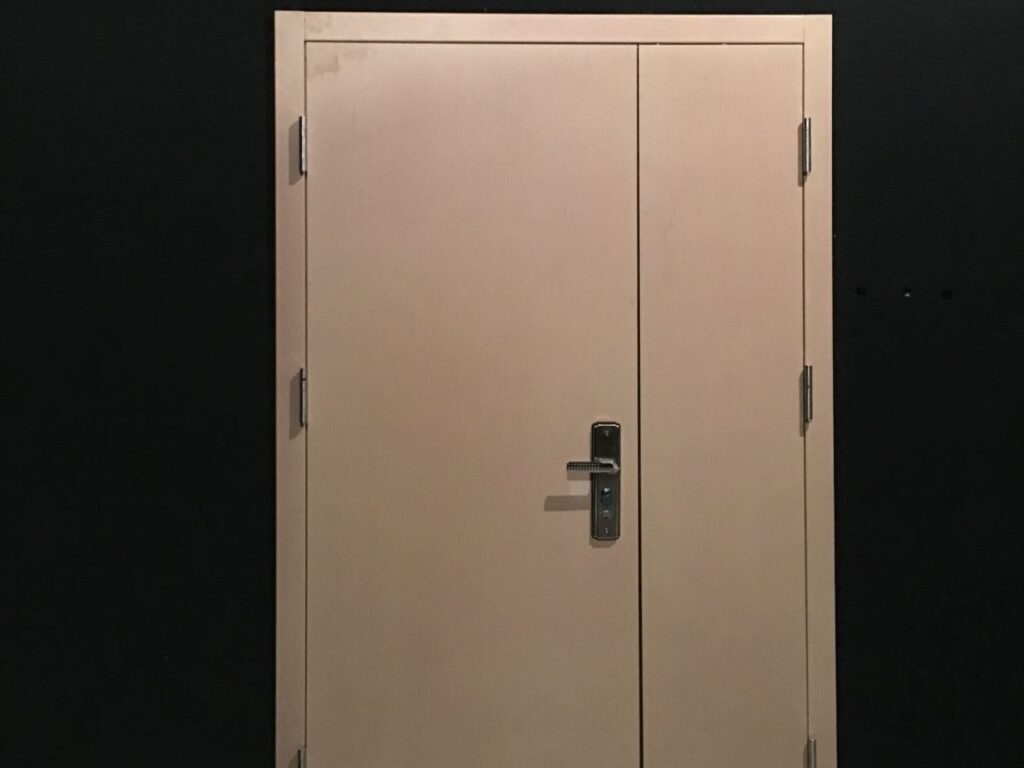
2. Exceptional Durability
One client told me their old apartment doors looked ten years older after just two. Between moving carts, weather, and daily slamming, those doors never stood a chance. Steel doors, on the other hand, are built to keep going even when the building gets busy.
Withstands Daily Wear and Tear
- Scratch-Resistant Finish: The baked-on coatings used for steel doors stand up to regular scuffs and contact. This helps the doors keep a clean, professional appearance even in high-traffic areas.
- No Sagging or Warping: Unlike wood or composites, steel stays straight over time. You won’t see door frames sagging or rubbing against the floor.
- Stronger Door Skins: The outer layer of a steel door is much harder to dent or crack. It stands up to carts, feet, and equipment without showing damage.
- High-Cycle Performance: Steel doors are designed to handle frequent opening and closing. That means less stress on hinges and frames over the long term.
Impact and Dent Resistant
- Thicker Gauge Steel: Vallisco’s doors are made with thicker steel skins for added durability. This helps in areas where carts, tools, or furniture may hit the door often.
- Internal Reinforcements: The inside of a steel door can include steel stiffeners or reinforcements. These boost structural strength without making the door too heavy.
- Better Corner Strength: The welded corners on a steel door add stability. That prevents splitting or corner crushes over time.
- Ideal for Utility Rooms: In utility areas or maintenance closets, steel holds up to heavy use. You won’t be replacing doors after every rough shift.
Built for Long-Term Use in Harsh Conditions
- Performs in Hot or Cold Climates: Steel doors are tested to handle extreme temperature swings. They won’t crack from dry air or swell during humidity spikes.
- No Moisture Absorption: Steel doesn’t soak up moisture like wood does. That means fewer problems with swelling, rotting, or mold.
- UV-Resistant Coating: The paint and finish on steel doors protect against sun damage. Even in outdoor or sunlit areas, fading and flaking are minimal.
3. Fire Resistance
I’ve had clients tell me they assumed all doors were fire-rated, until they got flagged during inspection. One even failed to meet code on a brand-new building because the interior doors weren’t up to standard. That’s why we always walk clients through the fire rating details before they place an order.
Meets Building Safety Standards
- Certified Fire Ratings: Steel apartment doors can be rated for 20, 45, 60, or 90 minutes of fire resistance. These ratings help meet local and national fire codes for multi-unit housing.
- Slows Down Fire Spread: The core and frame materials in steel doors are designed to resist heat and flame transfer. This gives residents more time to exit and limits property damage.
- Supports Safer Egress Routes: Fire-rated steel doors are ideal for stairwells and shared hallways. They help protect main escape routes during emergencies.
Protects Tenants and Property
- Won’t Burn or Collapse Easily: Unlike wood, steel doors won’t fuel the fire. They hold their shape longer, even under high heat.
- Factory-Installed Intumescent Seals: Many steel fire doors include intumescent seals that expand during heat exposure. This helps seal the doorway and keep smoke out.
- Reduces Insurance Risk: Properties with fire-rated doors often qualify for better insurance terms. It’s one of those upgrades that pays off in more ways than one.
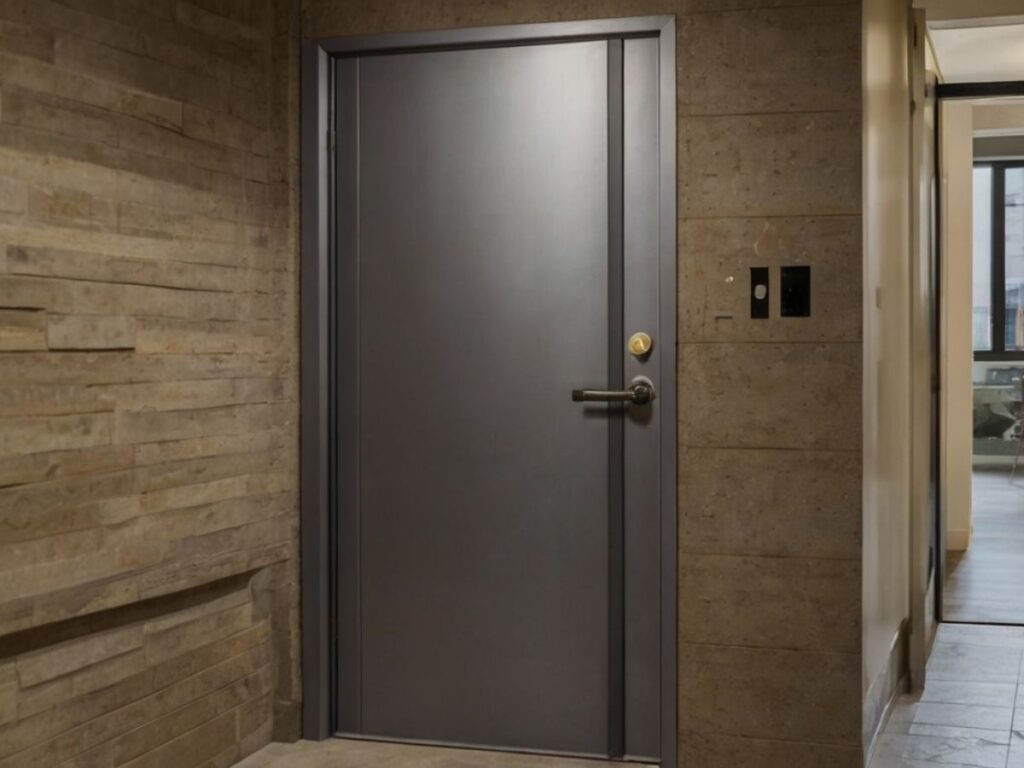
4. Noise Reduction
One of the first things tenants notice isn’t the flooring or lighting, it’s how noisy the unit is. I’ve had more than a few building owners come back to me saying they wished they had focused on soundproofing earlier. Steel doors make a surprising difference when it comes to blocking out unwanted noise.
Reduces Unit-to-Unit Noise Transfer
- Solid Core Barrier: Steel doors have a dense core that absorbs sound better than hollow or composite options. This helps reduce neighbor-to-neighbor noise in multi-unit buildings.
- Tight Sealing Design: Properly installed steel doors close with minimal gaps. That sealing action keeps sound from leaking through cracks and edges.
- Compatible with Acoustic Seals: You can add acoustic gasketing or sweeps to steel doors without compromising fit. These upgrades make a noticeable impact on noise control.
- Less Vibrational Rattle: Steel doors feel solid when they shut. That reduces echo, door rattle, and other minor sounds that cheap doors often create.
Helps Create Quieter Living Spaces
- Blocks Hallway Noise: Steel entry doors help block out voices, footsteps, and slamming sounds from busy hallways. That’s a big upgrade for tenant comfort.
- Ideal for High-Traffic Floors: In buildings near elevators or stairwells, noise reduction becomes even more important. Steel doors help create a quiet buffer for end units.
- Improves Perceived Quality: Quieter units feel more private and high-end. That feeling often reflects in tenant satisfaction and lease renewals.
5. Low Maintenance
I’ve seen property managers waste weekends replacing doors that were never built to last. Warping, chipping, and squeaky hinges become monthly problems when the material isn’t up to the job. That’s why we often recommend steel doors to clients who are tired of spending their budget on repairs.
No Warping, Cracking, or Swelling
- Moisture-Resistant Core: Steel doors don’t soak up humidity like wood does. That means no more swelling during rainy seasons or sticky doors in summer.
- Holds Shape Over Time: Steel doors stay straight and square even after years of use. You won’t have to plane the edges or shave down the frame.
- No Surface Cracking: The finish on steel doors is factory-applied and built to last. It won’t chip or crack easily, even in high-use areas.
Easy to Clean and Keep Functional
- Wipes Down in Seconds: A simple wipe with a damp cloth keeps steel doors looking sharp. No special cleaners or treatments needed.
- Less Hardware Trouble: Steel doors support stronger hinges and hardware. That reduces hinge pullout and keeps doors aligned over time.
- Stays Operational Longer: Steel doors resist the small issues that wear others down, like frame sag or latch sticking. This means fewer maintenance calls from tenants.
6. Energy Efficiency
I’ve had clients tell me their heating bills were through the roof, even after upgrading windows. What they didn’t realize was that the old apartment doors were leaking air around every edge. Switching to insulated steel doors helped them get those costs back under control fast.
Better Insulation for Temperature Control
- Foam-Injected Core: Most steel doors come with a polyurethane or polystyrene foam core. This material provides excellent insulation without adding weight.
- Thermal Break Design: Some Vallisco door models include thermal breaks inside the door to prevent heat transfer. This keeps inside temperatures stable and consistent.
- Stops Air Drafts: Steel doors fit tightly and compress against weather seals. That helps keep hot or cold air from sneaking through the gaps.
- Reduces HVAC Strain: With better sealing and insulation, your HVAC system doesn’t have to work as hard. That leads to less wear on equipment and more efficient operation.
Supports Lower Utility Costs
- Less Heat Loss in Winter: Insulated steel doors help retain indoor warmth during colder months. This reduces reliance on electric or gas heating systems.
- Blocks Heat Gain in Summer: In warmer climates, these doors keep the interior cooler. That leads to noticeable savings during peak air conditioning months.
- Energy Code Compliant: Many steel door models meet or exceed commercial energy efficiency codes. This is helpful for both new construction and renovation projects.
7. Enhanced Aesthetics
I’ve had clients hesitate on steel doors at first, thinking they’d look too industrial for residential buildings. But once they saw the finish options, panel styles, and color choices, their tone changed completely. Steel doors don’t just protect, they add polish and professionalism to any apartment complex.
Modern Look with Custom Options
- Sleek Finishes Available: Steel doors come in smooth, woodgrain, or textured finishes. These can mimic wood or offer a clean, modern appearance depending on your design goals.
- Wide Range of Colors: From neutral tones to bold accents, steel doors are available in a variety of factory-applied paints. Custom color matching is also an option for larger orders.
- Optional Vision Panels: You can add glass inserts to steel doors without compromising security. Frosted, clear, and fire-rated glass options are all available.
- Contemporary Hardware Choices: Door handles and locks can be upgraded to match a modern aesthetic. Matte black, brushed nickel, or stainless steel all pair well with steel surfaces.
Fits a Variety of Building Styles
- Matches Brick or Concrete Exteriors: Steel doors look natural in urban buildings made of brick or concrete. The clean lines and durability complement the overall structure.
- Works with Traditional or Modern Units: Whether your apartments are classic or contemporary, steel doors can be styled to fit. Panel designs, embossing, and hardware help tie the look together.
- Ideal for Entryways and Utility Rooms: Steel doors aren’t limited to main entrances. They offer a clean, cohesive look for stairwells, maintenance closets, and back corridors too.
Boosts First Impressions for Tenants
- Gives a Premium Feel: A solid, well-finished steel door feels higher-end than a hollow wooden one. That impression matters when showing units to new tenants.
- Less Visible Wear and Tear: Because the surface holds up over time, your doors stay looking new longer. No flaking paint or cracked corners to distract from the space.
- Consistent Appearance Across Units: Steel doors offer uniformity across your property. This gives a professional and intentional look to your building’s design.
- Upgrades Curb Appeal Instantly: A building’s doors are one of the first things people notice. Swapping out old ones for new steel makes an instant visual upgrade.
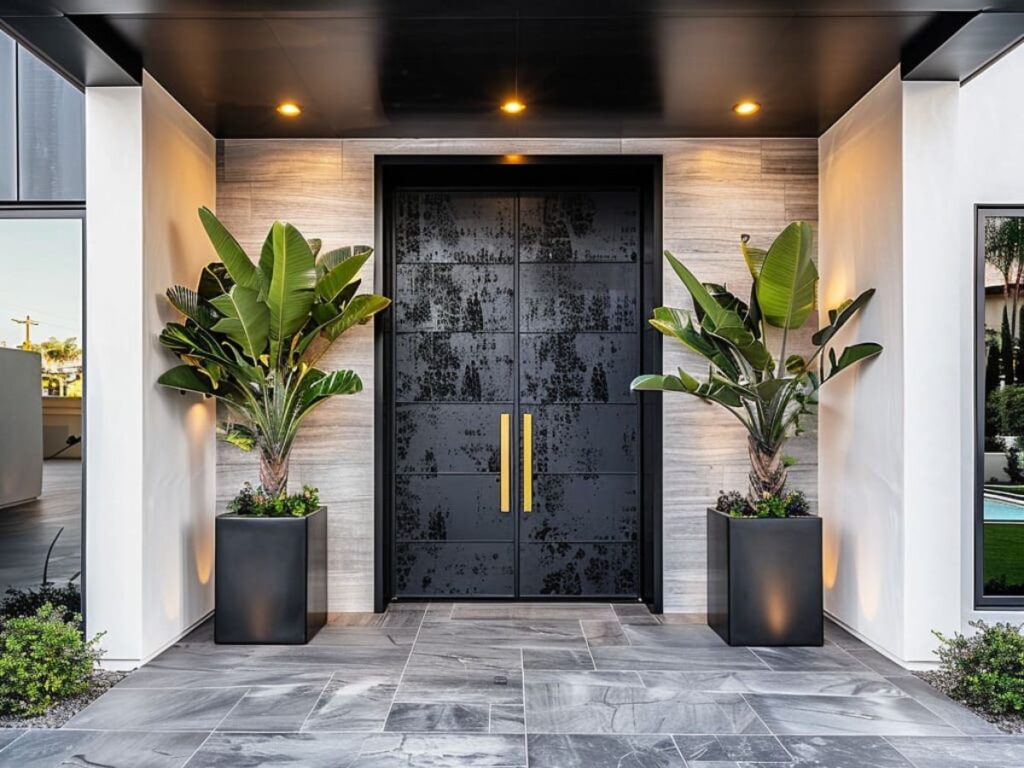
8. Increased Property Value
I once worked with a building owner who had just completed a full renovation, except for the doors. Appraisers pointed it out immediately, and his valuation didn’t reflect the investment he had made. After switching to steel entry doors, his reappraisal came in significantly higher.
High-Quality Materials Raise Appraisal Value
- Seen as a Long-Term Upgrade: Steel doors are recognized by appraisers as a permanent improvement. They contribute directly to both safety and performance metrics used during property evaluation.
- Signals Lower Operating Costs: Quality materials like steel indicate fewer future repairs. That boosts the building’s financial outlook and long-term appeal.
- Helps Meet Modern Code Requirements: Upgrading to steel often means bringing older buildings up to current codes. This can positively influence appraisal scores and resale readiness.
Long-Term Savings Appeal to Investors
- Reduces Turnover Costs: Steel doors last longer and need fewer fixes between tenants. Investors see that as a plus when calculating net operating income.
- Improves Insurance Standing: Properties with better fire-rated and impact-resistant doors often qualify for lower premiums. This adds another layer of financial value to the upgrade.
- Protects Against Depreciation: Because steel doors maintain their condition over time, they help slow visual and structural wear. That translates into better retained value over the years.
9. Pest and Weather Resistance
One of my clients had ongoing complaints about drafts and tiny bugs showing up near entry doors. The issue wasn’t HVAC or pest control—it was poorly sealed wooden doors that had started to gap and crack. We replaced them with steel doors, and those complaints stopped almost immediately.
Blocks Insects, Rodents, and Moisture
- Tight-Fitting Seals: Steel doors are designed to close snugly into their frames. This tight seal keeps out insects, rodents, and even moisture seepage.
- No Gaps or Cracks Over Time: Unlike wood, steel doesn’t split or rot. That means fewer entry points for pests to sneak through as the door ages.
- Pairs Well with Weatherstripping: Steel doors work seamlessly with high-quality weatherstripping. This adds another layer of defense without complicating the installation.
- Stops Mold Growth: Because steel doesn’t absorb water, it helps prevent moisture buildup. That cuts down on conditions where mold or mildew could grow.
Performs Well in Extreme Weather Zones
- Resists Wind and Rain: Steel doors hold up in storms, heavy rains, and high-wind zones. The strength and seal keep out water and prevent door flexing.
- Stays Stable in Hot and Cold: Whether it’s freezing winters or humid summers, steel doors don’t swell or shrink. That stability keeps the seal tight and the door functioning properly.
- No Warping from Sun Exposure: Even in areas with intense sun, steel doors resist warping. The UV-resistant coatings protect the surface from fading and damage.
10. Eco-Friendly and Recyclable
I’ve had more developers ask about sustainability in the last two years than in the previous ten combined. It’s not just about being green, it’s about meeting tenant expectations and local building codes. Steel doors check that box without sacrificing performance.
Made with Sustainable Materials
- High Recycled Content: Most steel doors are manufactured using a large percentage of recycled steel. This helps reduce the demand for raw materials during production.
- Low-VOC Finishes: The paint and coatings used on steel doors often meet low-emission standards. That means cleaner indoor air quality and easier compliance with green certifications.
- Supports LEED and Green Building Credits: Steel doors can contribute to points in LEED and similar rating systems. That adds value if you’re building or retrofitting with sustainability in mind.
100% Recyclable at End of Life
- Steel Can Be Fully Recycled: When a steel door reaches the end of its use, it can be recycled without losing material quality. This reduces landfill waste and supports circular construction practices.
- Easy to Decommission and Reuse: The framing and core materials are easy to separate for reuse or recycling. That makes steel doors a smarter choice for long-term planning.
- Reduces Lifecycle Environmental Impact: From manufacturing to disposal, steel has a lower total footprint compared to other door types. That’s a win for sustainability goals and long-term property value.
Conclusion
In the end, that property owner did what worked. They stopped settling for short-term fixes and made a long-term change.
Steel doors turned their building around and they can do the same for yours. You’ve seen what they offer: better safety, tighter insulation, fewer tenant headaches.
We connected the dots so you don’t have to. All that’s left is your next step.
Contact Vallisco today and let’s build something stronger, starting with your doors.
Discover More Options
For more helpful content, explore our collection of recommended reads:
Still haven’t found what you’re looking for? Don’t hesitate to contact us. We’re available around the clock to assist you.




